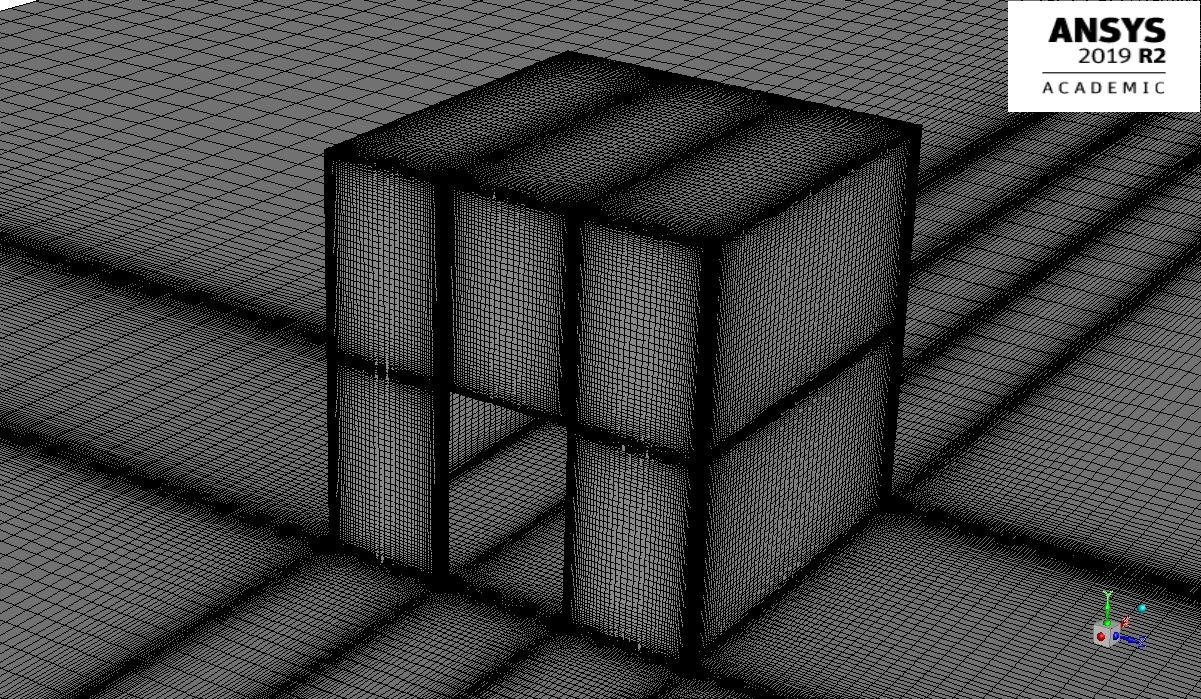-
-
March 28, 2021 at 2:47 pm
NimaNZ
SubscriberHi everyone
I'm dealing with a simple geometry of a bluff body (a cubic cylinder L/D=1) in a domain. Due to the necessity of having dense mesh near the wall and close to areas of interest, when I produce the structured mesh and one dimension of those dense meshes will be the same small up to the inlet and outlet sides of the domain. This will cause a high aspect ratio far from the geometry of interest and also too much mesh in the spaces which are not necessary. (please see the attached photo)
Now how it is possible to avoid this happening? Should I use prism mesh close to the area of interest? of instead of using parallel guidelines, I should use guidelines with angles to increase the width of the small meshes far from the geometry?
I'd appreciate any advice
March 29, 2021 at 1:41 pmRob
Forum ModeratorWhat are you trying to model? I'd look at domain decomposition with the idea of a fine mesh around the block, and wake region and coarsen out into the far field. Poly or tet cells will be your friend here. nMarch 29, 2021 at 1:44 pmKarthik Remella
AdministratorHello,nYou could potentially use bodies of influences for local mesh refinement. nRegarding your high aspect ratio: this might be a good thing if you want to limit the overall count. One of the advantages of hex meshing is that we can create stretched meshes in one direction. Again, you might want to inspect whether or not these high AR elements are in your regions of interest. If they are not, I wouldn't worry too much about them. Also, these are pretty common in inflation layers.nKarthiknMarch 29, 2021 at 4:57 pmNimaNZ
SubscribernThanks for your reply.n I?m trying to model cube with a hole on front in a domain with inlet and outlet. Exactly, it requires high resolution at all faces of the cube because of separation to achieve proper yplus. As it is LES, the growth rate cannot be high and it will be ended up with millions of meshes which are not affordable in terms of computational cost. I wanted to have a structured mesh with full control on it but reduce the number of meshed far from the cube.March 29, 2021 at 5:00 pmNimaNZ
Subscribernthanks for your reply.nThat?s the point, I want the lowest possible count while having high resolution near the wall and the growth rate less than 10%. So this method of meshing gives much less than say cutcell with body of influence, but still too much.nMarch 30, 2021 at 1:25 pmRob
Forum ModeratorOK, in that case you may struggle: hex mesh, good near wall resolution and structured aren't going to allow a small cell count without high aspect ratio cells. One option is to review adaption, that'll let you refine near the block but may not save you much in terms of cell count. nApril 1, 2021 at 11:40 amNimaNZ
SubscribernI think this is the most economic and easy to handle method to mesh this geometry; I think O-type meshes require less count they are difficult to handle and design.nThanks so much for your reply.nViewing 6 reply threads- The topic ‘Efficient Mesh’ is closed to new replies.
Ansys Innovation SpaceTrending discussionsTop Contributors-
3597
-
1283
-
1107
-
1068
-
983
Top Rated Tags© 2025 Copyright ANSYS, Inc. All rights reserved.
Ansys does not support the usage of unauthorized Ansys software. Please visit www.ansys.com to obtain an official distribution.
-


Ansys Assistant

Welcome to Ansys Assistant!
An AI-based virtual assistant for active Ansys Academic Customers. Please login using your university issued email address.
Hey there, you are quite inquisitive! You have hit your hourly question limit. Please retry after '10' minutes. For questions, please reach out to ansyslearn@ansys.com.
RETRY








